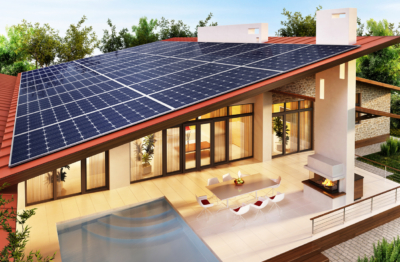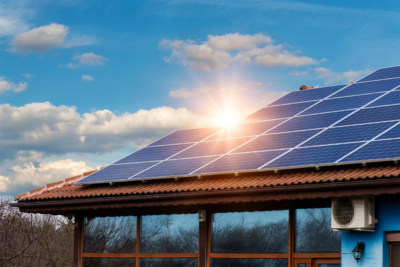In order to achieve a better tomorrow, we all need to start making sustainable choices today. One consideration is a conversion to solar power, but this decision can be mind-boggling. “What types of solar panels will be best for me? Should I use monocrystalline solar panels or polycrystalline panels? Will amorphous solar panels work for me?”https://slovenijalekarna24.com/
While the science of solar may be perplexing, your choice of solar panels does not have to be. This information should shed light on the subject and help you make an informed decision.

What Are the 3 Types of Solar Panels?
Ninety percent of the photovoltaic solar cells used in the world are made of silicon, and 95% of those installed in residential settings are silicon-based.
There are 3 types of solar panels primarily used in the solar industry:
- Monocrystalline solar panels
- Polycrystalline solar panels
- Thin film (amorphous) solar panels
These 3 types of panels are used for 4 main types of solar energy:
- Electric Systems
- Water Heating
- Pool Heating
- Concentrated Power
Monocrystalline Solar Panels
Monocrystalline solar panels might best be remembered and described by their sometimes-used alternate name, single crystalline panels. Mono panels, as they are commonly referred to in the solar industry, are the most efficient because they are the purest, made of a single silicon ingot using the Czochralski method.
Polycrystalline Solar Panels
Once again, the alternate name for polycrystalline solar panels, multicrystalline, helps to describe its composition. Poly panels, as these solar panels are referred to in the alternative energy business, are multiple pieces of silicon that are melted, treated, and molded into uniform rectangles.
Monocrystalline vs. Polycrystalline Solar Panels
There are certainly differences between monocrystalline solar panels and polycrystalline panels, but the wonderful thing is that the reasons for choosing one over another are relatively straightforward. Here’s the thing to keep in mind: a 250W mono panel should give you the same results as a 250W poly panel. So what are the differences?
- Because a monocrystalline solar panel is the most pure, it is the most efficient, so you need less space for your solar power system.
- Because a monocrystalline solar panel is the purest and the most efficient, it is also the most expensive.
- Polycrystalline panels do not have the solid black coloring of mono panels, are blue in color, and have a uniform rectangular shape as opposed to the shaved rounded corners of mono panels.
- The shaved corners of the monocrystalline panels result in more silicon waste in production.
- The single crystal silicon of monocrystalline panels makes them more tolerant of higher temperatures and low light.
- Because polycrystalline panels are not as resistant to light and heat, they may have a shorter lifespan than monocrystalline solar panels.
Amorphous (Thin Film) Solar Panels
The least expensive, and also the least efficient, solar panel option is thin film. Thin film solar panels are made from a photovoltaic substance that is applied to a substrate like glass.
The TFPV (Thin Film Photovoltaic) substances used are:
- Amorphous silicon (a-Si)
- Cadmium telluride (CdTe)
- Copper indium gallium selenide (CIS/CIGS)
- Organic photovoltaic cells (OPC)
The uniform look of thin film is pleasing, and thanks to its flexibility, there are some new possibilities for harnessing solar energy. The problems with thin film solar are that it is still a relative infant in the alternative energy industry, so it is still developing and changing. Also, its lower efficiency means it needs a great deal of space, so at this point is typically only practical in commercial or industrial settings.
What You Should Consider When Choosing Types of Solar Panels
Now that you have a little more information about the 3 types of solar panels, how do you decide? Here are some things you should consider:
- Space available for installation
- Environmental conditions
- Amount of shade
- Cost per watt
- Storage requirements
- Possibly, country of origin, if that is an issue on your radar

Keep In Mind
- The efficiency rate of a single solar cell is higher than the efficiency rate of the full panel.
- The higher the ambient temperature, the less efficient the panel will be.